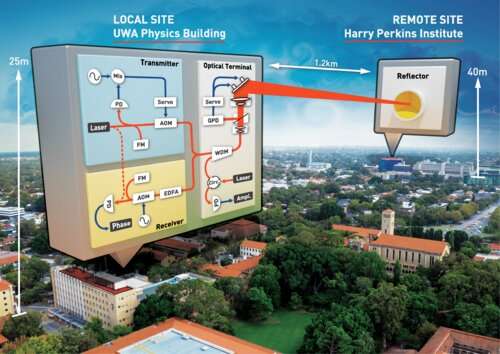Phys.org January 24, 2022
The propagation of laser through turbulent atmosphere is affected by wind and minor equipment vibrations. Researchers in Australia used a host of features to keep the beam stable, including temperature controls, noise reduction and automatic adjustments to the devices holding the equipment. The test involved sending a beam from a building to a site 1.2 kilometers away. The target consisted of a mirror to bounce the laser beam back to a device near the source of the laser. The beam was held in place for approximately five minutes. Once a long-distance means of sending laser signals is established, scientists expect them to be used to communicate between ground stations and satellites or orbiting craft. Connecting one atomic clock on the surface of the Earth to one aboard a spacecraft would allow for testing Einstein’s general theory of relativity. Stable lasers could be used to improve the technology involved in launching vehicles into space, create a very large atomic clock network for testing a variety of physics theories…read more. TECHNICAL ARTICLE

Simplified schematic of the phase stabilization system integrated with the optical terminal. Blue lines, rf signals; and red lines, optical signals. Credit: Phys. Rev. Lett. 128, 020801, 14 January 2022